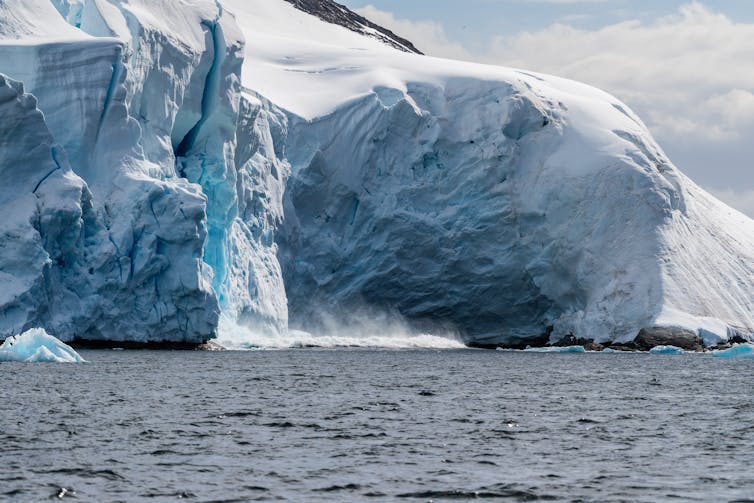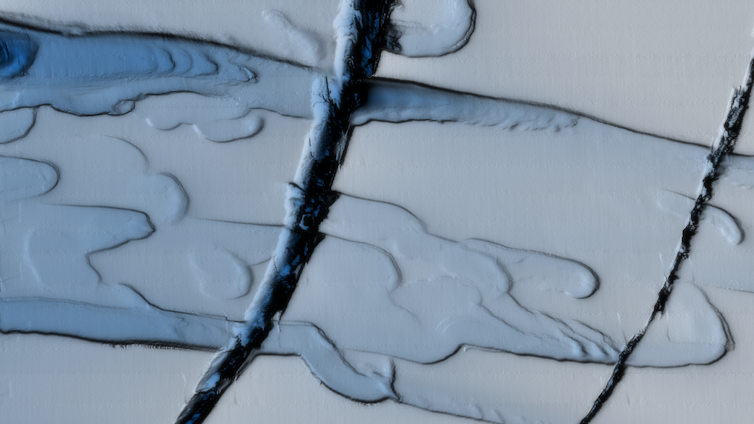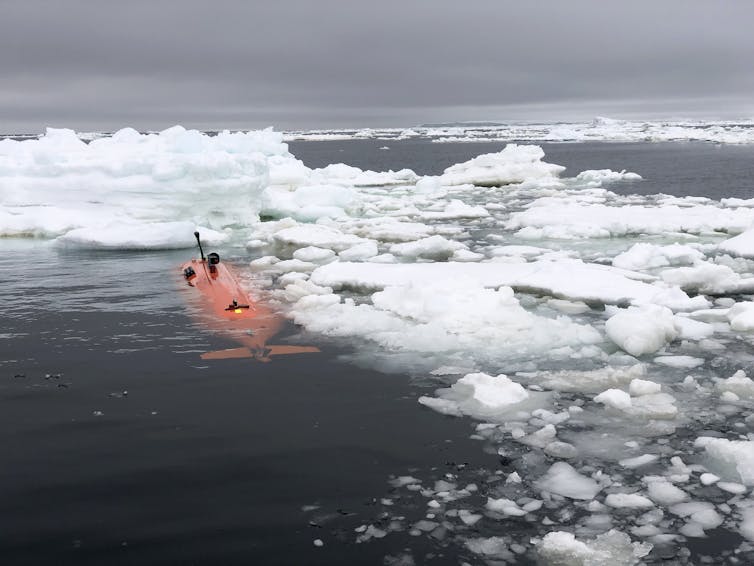The size of the Antarctic ice cap can be difficult to comprehend. The ice cap is on average two kilometers thick and covers the surface of Australia almost twice and contains enough fresh water to increase global sea level by 58 meters.
It is expected that ice loss from this layer against 2100 will be the main cause of the rise in sea level, but its contribution remains highly uncertain. Although the sea level will certainly rise this century, the projections of the contribution of the Antarctic ice cream vary from an increase of 44 cm to a decrease of 22 cm.
A large part of this uncertainty is because the ocean processes that determine the fate of the plate take place on an incredibly small scale and are very difficult to measure and model.
But recently, scientists have made considerable progress in understanding this ‘boundary layer between ice and ocean’. This progress is the subject of our new overview article, which was published today in Annual Reviews.
Shrinking, thinning and withdrawing
On the edges of the Antarctic ice cap, glaciers flow into the southern ocean and form floating ice plates. These ice plates act as keystones and stabilize the ice sheet. They are also shrinking.
The ocean melts ice plates from below – a process that is known as ‘basal melting’. In some regions, the increased basic melting has led to becoming thinner and withdrawing the ice cap, which increases sea level worldwide.

Goudlokje Project/Shutterstock
It has also delayed the deepest current in the global tilting circulation, an ocean currents system that circulates all over the world.
Just like the glaciers they feed, the ice plates are enormous. Nevertheless, the ocean processes that control the basal melts, and the fate of the entire Antarctic ice sheet, take place on the scale of millimeters. They happen in a thin layer of ocean, just below the ice.
The boundary layer between the ice plate and the ocean is miles far from anywhere else and is located under very thick ice. So it is no wonder that it has hardly been measured.
Studying this layer with other techniques such as computer simulations is also a huge challenge. Until recently, the small movements within the boundary layer between ice and ocean ensured that accurate modeling of the melting of ice was out of reach.
These two challenges have for a long time impeded attempts to answer the deceptively simple question: “How does the ocean melt the Antarctic ice plates?”

Filip Stedt
Modeling the micro -scale
Computer simulations of ocean processes are not new.
But it was only recently that simulations of the boundary layer between ice and ocean have become feasible, because the computer sources grow and the costs for using it.
Various research groups around the world have tackled this problem by modeling the ocean flow on micro -scale that supplies heat to the ice to melt.
Researchers are looking for a connection between what the ocean does and how quickly the ice melts. Until now they have not only exposed one relationship, but several, each pointing to a different smelter regime. The ocean conditions (temperature, salt content and the speed of the ocean currents) and the shape of the ice determine which smeltrregime applies.
The shape of the ice cap is crucial because melt water is sweet and lighter than the surrounding ocean. Just as hot air collects at the top of a room, fresh melt water collects in cavities in the lower surface of the ice cap, so that the ice is isolated from the ocean water underneath and the melting is delayed.
With steeply descending ice, the insulating effect is much less. The energetic stream of melt water while rising under steep ice leads to mixing with the warmer ocean water. This increases the melting.
Fast ocean currents have a similar effect, because they transfer heat to the ice.

Filip Stedt/University of Gothenburg
Robots equipped with Sonar
Recently ocean robots, including autonomous underwater vehicles and tied probes that are used by drilling through the ice, delivered unprecedented amounts of data about the environment under the ice plates.
With the help of sonar and cameras, these robots have unveiled a strange and beautiful ‘Icelandscape’ at the bottom of ice plates.
This ice landscape is made from many different ice elements, ranging from centimeters to kilometers in size. Some, such as steep glacier gaps, are formed by ice breach. Of others, such as dented depression in the ice (often called ‘Sint-Jakobs shells’), stair-shaped ‘terraces’, mussel-shaped ‘create’ and larger basic channels, it is believed that they have been formed by melting processes.

Filip Stedt
Our new knowledge about melting from computer simulations and robots sheds light on these characteristics and how they arise. The existence of smeltrregimes helps to explain the evolution of terraces with steep walls, or why different characteristics appear in different parts of an ice plate.
For example, in the warm, quiet eastern part of the Dotson IJsplaat in West Antarctica, an autonomous robot observed basic terraces. In the west of Dotson – where there is cold, fast current – large mussel -shaped creations were discovered.
There are still uncertainties
How some of these characteristics form exactly is still unknown.
New simulations that make it possible for the ice water limit to move over time, show the ‘self-sculpting’ behavior of melting ice. This is similar to how dunes form and move in a desert.
However, new computer models are needed to simulate the formation and evolution of the entire Icelandscape.
Some of the recent developments that are emphasized here help to reduce uncertainty in our understanding of the Contribution of the Antarctic ice cap to global sea level rise.
However, the recording of our new understanding of basic melting and the dynamic Icelandscape that forms this, in climate and ice roof models, still is still a huge challenge.
Overcoming this challenge is urgent. An accurate representation of melting in climate and ice roof models will reduce the great uncertainty in the projections of the sea level rise, especially as the circumstances in the oceans- and the regimes for melting ice plates- changes in the future.


